
My last visit to the Jantar Mantar at Jaipur was as long ago as 1992 so the accompanying photo has had to be scanned in from a 35mm slide!! But I remember the visit, and indeed the entire stay in Jaipur with pleasure. This is a worthy addition to the list and a visit to Jaipur will bring in many other fine sights too!
India’s Tentative list entry for this site originally listed the existing 4 Jantar Mantars for potential inscription (Jaipur, Delhi, Varanasi and Ujjain – a fifth at Mathura no longer exists) but must have concluded that it was better to concentrate on that at Jaipur. They were all built by Jai Singh, “a regional king under the Mogul Empire”, between 1724-7. Jaipur’s is the largest and, as I remember the one in Delhi many years ago, the better preserved/restored – though the small one in Varanasi situated atop a building is also rather fine and I have never been to Ujjain. They all provide a haven of quiet from the bustling city outside within a walled “park” containing a series (Jaipur has 14) of large (the biggest at Jaipur is 27m tall) and complicated-looking astronomic instruments, known as “Yantras” , each designed to measure some aspect of the passage of heavenly bodies – determining time, predicting eclipses, placing planets etc. My photo is of the “Jai Prakash” – a hemispherical sundial said to be Jai Singh’s “most elaborate and complex instrument”. I would not claim, either at …
Keep reading 0 comments
The Horezu Monastery is located about a 2-hour drive south of Sibiu, on the road to Targu Jiu. I hadn’t found much visitor information beforehand, so I just hoped it to be open on a Monday morning in late August. When I arrived there were only a couple of cars in the parking lot, and one single souvenir stall out of a row that was open. It’s not a site that appears to be visited by hordes of tourists, certainly not foreign ones.
You have to walk uphill to get to the monastery. The entrance is via a gate in the thick surrounding walls. You can just walk in, there’s no entrance fee and it does appear to be open every day (as it is an active nunnery). From the gate my attention was immediately drawn to the church in the center of the grounds: it is very white and a bit odd shaped (I had seen that already in pictures), and its front portal is completely covered by wall paintings. Clouds had been covering the sun for most of the morning, but fortunately, the sun came out now to brighten up my pictures of this very pretty site.
I slowly walked around in the enclosure, which isn't very large. Under the bell tower is a small refectory, almost like a cave. It holds a table and about 40 chairs, and its walls are completely covered in paintings. What a place to eat every day! The Last Supper …
Keep reading 0 comments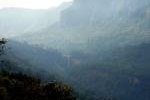
The central highlands of Sri Lanka, in my opinion, one of the most prettiest places in Asia, when we look at the map of this country, the magnificent lush green areas in the middle of the tear drop shaped island are really attractive and full of many places to discover from the famous multi-religious holy site of Adam’s Peak (Sri Pada) to the tea plantations of world famous Ceylon tea.
As a usual tourist, I started my trip to central highlands from the holy city of Kandy, another WHS and home of the sacred tooth relic, which actually located under the shadow of Knuckles Range, a part of this WHS. The road from Kandy to Nuwara Eliya was just breathtaking with beautiful mountain landscape, lakes, and countless tea plantations; sometimes I still reminded the taste of chocolate cake and a cup of silver tip white tea I had while watching the waterfall, a perfect holiday. At night from the colonial villa hotel in the middle of tea plantations, I saw Sri Pada flooding with lights for pilgrims while hearing the Buddhist chanting from nearby temple, a real spiritual inspiration.
As you may noticed the prime attractions of the highlands were not natural heritage, but the cultural ones, when WHC decided to inscribe this place as a WHS on natural merit made me have to look back and from my experience, I found that the highlands were beautiful tropical mountain jungles but nothing significant enough to be WHS, actually if you …
Keep reading 0 comments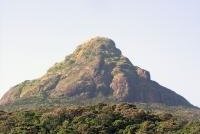
We visited 2 of the 3 elements of this site during a trip to Sri Lanka in 2005.
Horton Plains NP is particularly noted for its bird life including a number of Sri Lankan endemics and also harbours rare mammals. As such it appears on the itinerary of all Sri Lankan birding and wildlife tours. It reaches 2300m and consists of a mixture of forest and open grassland.
It can’t have been entirely coincidental that, just a few days before its consideration at Brasilia, a piece of news was released to the world’s newspapers to the effect that the Horton Plains Slender Loris had been photographed for the first ever time!! This is one of the World’s top 5 most endangered primates with possibly less than 100 remaining – a nicely timed piece of “news”!
Another piece of trivia which might be of interest is its very “English” title which relates to the British Governor of Ceylon 1831-7 - a Sir Robert Wilmot-Horton. He in turn had adopted the second part of his name under the terms of his father-in-law’s will which required that this action be taken in order that he could inherit the country estate!
Apart from the wildlife the main other “sights” within the Park are an 870m cliff known as “World’s End” and an attractive but not particularly noteworthy waterfall named “Baker’s Falls” after the British African explorer.
The second element we visited was the “Peak Wilderness Sanctuary” (which is adjacent to Horton Plains NP –the …
Keep reading 0 comments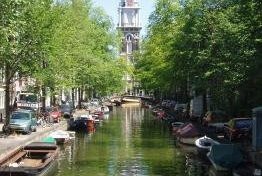
Amsterdam is a truly worthy addition to the World Heritage List, and it hopefully will start to bring some balance to the pretty esoteric sites that the Netherlands has so far had inscribed.
My own experience of Amsterdam didn’t start off too well. Arriving very early on a mid-summer morning I wasn’t particularly enamoured with the slightly tawdry atmosphere and mildly unkempt streets that I discovered. I couldn’t just really get into the city’s charms, and after a slightly confusing morning I headed off to see friends elsewhere in Holland. I returned 4 years later hoping to discover what I missed the first time around, and I certainly did.
Although I still found the first stretch of Damrak to be disappointing, the rest of the city became a joy. I especially liked the outer canals, and spent a fair bit of time wandering aimlessly around them, stopping of for food and drinks and just generally enjoying the unique atmosphere of the city. That was the thing that I think most impressed me, whilst there are many lovely buildings & museums, and there are the well documented other ‘perks’ of the city that attract so many tourists, it was the almost intangible joy of being in such a unique urban environment that really stayed with me.
With the inscription of Amsterdam, the list contains one of northern Europe’s finest urban centres, and the Dutch entries now look a little more balanced.
Keep reading 0 comments
Krakow is unique, bohemian, artistic and creative, original and historic - I think that is the best short description of my experiences in the city. Its like this hidden treasure of Europe, emerging on the global scale. The main old town square and the old jewish district of Kazimierz have probably the most unique ambience , truly a World Heritage site, where even today one can experience not just Polish, but European and World culture. One should remember to try the local food, and if possible avoid the modern shopping malls and explore more the traditional stores where you can find authentic and original products from the region.
Keep reading 0 comments
There is a lot of debate about the best way to visit Angel Falls, either by air or by land (really river). I have just returned from Venezuela and had the benefit of doing both and they are both wonderful but different experiences. I will summarize both and list the pros and cons of each and you can decide.
First by air. Most people fly to Cainama form Peurto Ortez in commuter planes that fly regularly once a day. Cainama is a asphalt strip by a big lagoon where most good lodges are situated. The flights to Angel Falls are usually from Cainama and the pilots sit around playing dominoes in thatched huts until they think its time (usually 11am and 2pm when the weather is best) and then they look around for their passengers and take off in old beat up Cessnas. The flight is not too bumpy and the fly bys are spectacular. The pros are 1. The scenery from the air is amazing. You get to see the top of the tepuis, the whole grandeur of the waterfall etc. 2. The trip is pleasant and there is no long journey involved. The cons are 1. The view from the air is less dramatic because you are far from the waterfall and it looks small. 2. The windows of the Cessnas are glazed from age and your view is reduced by up to 50% and 3. The trip is all too short.
By river can be done in …
Keep reading 0 commentsMy trip to Dinder National Park was a dream come true!
It is an amazing place and has so much natural beauty. For Wild life lovers it is a place to visit because this Park is so very unique and undisturbed by humans.
Although it is a Biosphere but the human inhabitants are aware of the sensitivity of the environment and the wild life, they blend in well with the surroundings.
Should anyone decide to go, please keep a good supply of Food and Water and make all arrangements from Khartoum prior to departure.And dont forget your Cameras!!
Keep reading 0 comments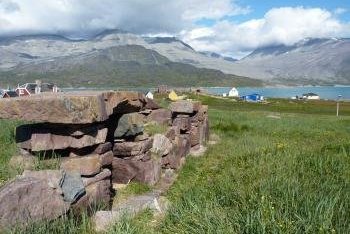
The Norse settlement of Greenland and the North American mainland remains one of history’s great “what ifs” so it was interesting to visit Bratthalid and Gardar (on the same day) during a trip in southern Greenland in 2010 and discover more about this historical cul de sac.
All 3 T list sites are situated within the Norse “Eastern Settlement” – which, confusingly, was located on Greenland’s SW coast. A “Western Settlement” was further North – and a bit further West! At their greatest extent the population across both was probably only around 4000 and possibly as low as 2000. The first people arrived from Iceland in 980. The Western Settlement had been abandoned by around 1300 and the last recorded occupation of the Eastern Settlement was in 1408 – though it may have struggled on for some years thereafter. Indeed when Denmark (which merged with Norway in 1380) re-invigorated its interest in Greenland in 1721 in the form of the missionary Hans Egede, he actually hoped to find some Norse settlements and was concerned that they would still be Catholic, having “missed out” on the Protestant Reformation!! Although the settlements adopted agriculture and animal husbandry they apparently never achieved (nor sought) any degree of autonomy, cultural or physical, from Iceland/Norway, being part of a trading system whereby walrus/narwhal ivory and sealskins etc were exchanged for European necessities. Throughout these settlement years regular visits were probably being paid to the coasts of mainland N America parts of which were named as …
Keep reading 0 comments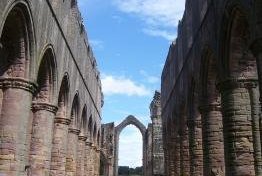
This was a great place to spend a leisurely afternoon and was one of the more impressive WHS I have visited in England. The planned gardens were particularly impressive especially the highly formal water garden. Many of the gardens I have visited in the UK have a folly as their focal point, however here the huge remains of Fountains Abbey provide a much better focus. The view from Anne Boleyn's chair is magnificent and shows the best aspects of this planned landscape. I was actually surprised by how extensive the ruins of the abbey were, I was expecting a small church and maybe a few crumbling walls. However the ruins were very large reflecting the fact that this was one of England's largest abbeys.
You have to pay to enter the formal gardens and abbey, however all are free to walk through the Deer Park and visit the impressive neo-Gothic St Mary's church, both of there are really great additions to the world heritage site.
The site is located just outside of Ripon in north Yorkshire. If you don't have your own transport then there are regular buses on Sunday's and few infrequent ones the rest of the week. I unfortunately missed one of the few busses on the Saturday that I visited. However I had half expected this and was prepared for the pleasant 5km walk from the town centre to the start of the gardens proper. It was nice to get into the countryside, and although it wasn't …
Keep reading 0 comments
This site definitely does match the criteria for a WHS. Should anyone not just read its history, but also compare its architecture and decoration to contemporary churches, you will find its importance as an architectural work of art from the middle ages. Especially the tympanum in the narthex (entry hall) of the church is important to the history of medieval sculpture and can be found in almost any book on art or architecture dealing with this period.
Furthermore, the 19th century restoration/reconstruction by Viollet-le-Duc is almost as much worth calling a heritage 'site' on its own. It reflects the thoughts and views on restoration in France's very first years as a country aware of its valuable historic heritage. Untill the 19th century, all evidence of France's history as a kingdom was considered to be worthless; from about 1800 on, it slowly started to go the other way around. The building up of a new Franch nation after the Revolution was to be nurtured by these reflections on the past, showing France's former excellence in building, craftmanship etc.
Keep reading 0 comments
visited el djem and the roman amphitheatre...wow!For lovers of roman art and history this place is a must..do not make the same mistake as us though...do not go on an organised trip/excursion...you will be rushed and not have enough time to take in the atmosphere of this magnificent site.Sit in the stands and just imagine the death and destruction that went on in there in order to satisfy the masses...walk up the entrance to the arena,from the dungeons below and you are walking in the footsteps and seeing the sights of gladiators from thousands of years before you...El djem puts you back in time...you can hear the crowds roar...aswell as the lions!
Keep reading 0 comments
Twice I have visited Great Zimbabwe and the last time I did I must say the awe that first struck me the first time had been amplified twice. The place is simply amazing. Those guys of old were definitely more sophisticated than us guys to be able to build that structure without computers, winches, dump trucks and all. They deserve our respect.
Keep reading 0 comments
The paper mill is an interesting building. It is the only remaining hand made paper mill in Czech republic. Visit is not so long so you can try to make your own paper after the visit :)
Other important sights are the Castle in Velke Losiny and two wooden churches from 1609 in villages Marikov (3km) and Razova (4km).
As well there are spa in the same village.
Keep reading 0 comments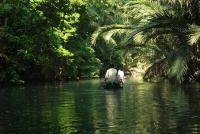
Ujung Kulon National Park is one of many Indonesian Beauty. Yet, it takes quite an effort to get there, thus make the park has not been visited as often as it should be.
There are many ways of actually embracing it. Island Hopping, trekking, canoeing & snorkling in and around those small islands. Not to mention spending the night in a simple lodging and have to bring or prepare our own food while there.
Although it is said that the park is the home of the one-horned rhinoceros, but it is not easy to find and see one. Yet many other inhabitants are very easy to find and see.
Ujung Kulon experience is really a great one!
Keep reading 0 comments
WHS-collectors should do this beautiful hike first: from the eastern end of the Pradera de Ordesa, cross Río Arazas and climb steeply up through the woods on the valley's south side. This hardest part, called "Senda de los Cazadores" (Hunter's Path), in which you ascend 600m, takes an hour. Then it's level or downhill all the way along the high Faja de Pelay path to the 'Circo de Soaso', a rocky balcony whose centrepiece is the Cola de Caballo (Horsetail) waterfall. Return by the easy path along the bottom of the valley, passing through several waterfalls. This circuit takes 7 hours, so bring those picnic sandwiches and mineral water. (Summer 2010)
Keep reading 0 comments
One of the best things are that these 3 sites are next to each others so you can visit them in one day if you want. I visited only in the cathedral and Alcazar. It was very cheap visit for me: for students entrance to cathedral is only 2 euros and entrance to Alcazar is free! The gardens were my favourite part in Alcazar. I think Alcazar is as interesting as Alhambra. In cathedral I liked the treasures that they had there.
Keep reading 0 comments
Echmiadzin and Zvarnots are a little underwhelming, especially compared to other monuments in Armenia. I would recommend Gerghard and Khor Virap as more interesting trips if you are staying in Yerevan. The museum in the main cathedral at Echmiadzin does have some interesting exhibits, but the main museums in Yerevan are better.
Keep reading 0 comments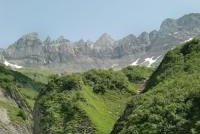
The most impressive mountains of the Swiss Tectonic Arena Sardona are the Tschingelhörner. To go there I suggest you travel to Elm, a small picturesque village in the Glarus region. The village is easily reached by car. Otherwise take a bus from Glarus (the city) as there is no train. In Elm you will find a small funicular that brings you close to the mountains. To get a closer look the only way is to hike. There are (quiet expensive) 1 to 2 days guided tours on weekends that bring you close to the Tschingelhörner. To see the whole area you can hike from Elm to Flims. The trip takes about 6.5 hours and shouldn't be done by inexperienced mountain hikers.
Keep reading 0 comments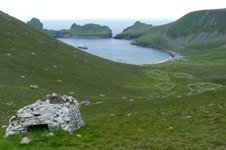
The previous reviews cover the 2 main ways of visiting St Kilda (Beyond having your own yacht!) – a day trip from Lewis and a longer (often c 1 week) small boat cruise of the area. In addition, however, there are a number of “Expedition Cruise” boats which take in the Islands as part of a larger (2 week) tour of UK islands or of the North Atlantic/Sub Arctic. We visited on one of the latter having set off the previous evening from Oban en route to Greenland. On arrival we were lucky to find a NW wind which left Village Bay reasonably well protected – our Zodiac landings at the little concrete pier were a bit bumpy but a planned cruise through the small gap between the islands of Hirta and Dun wasn’t possible with large Atlantic waves crashing through. The risk of not being able to land at St Kilda is high – the summer season day trips are scheduled on alternate days to provide a cushion against bad weather and you need to allow for delayed departures in your plans.
St Kilda is often stated to be the most remote island group on the British Isles ever to have been inhabited but in fact the island of North Rona is further from the nearest other land (c44 miles v 40). The latter (which our tour visited on the following day) contains early Christian remains dating back to 7th/8th century but lost its permanent population around 1844. St …
Keep reading 0 comments